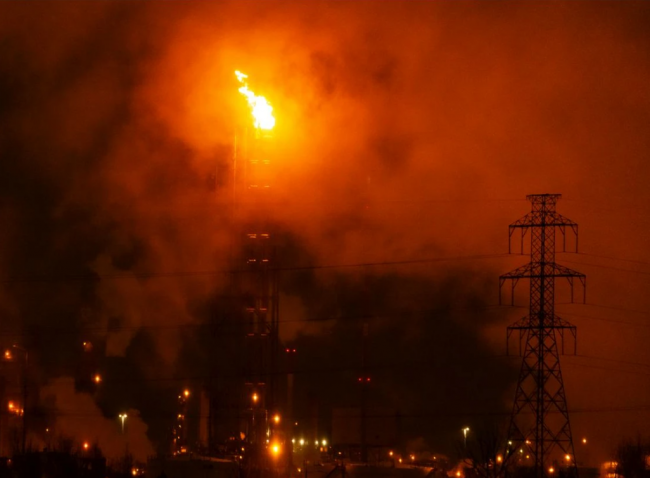Articles Menu

Oct 21, 2022
“Let’s Clear the Air” is the newest branding effort from Canada’s oil and gas industry. Having moved on from outright denial of the climate crisis, oilsands companies are now trying to position themselves as environmental leaders who are committed to reducing their greenhouse gas emissions.
But should we buy it? The oil and gas sector continues to be Canada’s largest and fastest growing source of emissions. And it’s not just overall emissions — Canada’s oil and gas is the second-most polluting in the world.
If these companies want to be seen as good climate partners, they need to get those emissions under control. That means committing to science-based targets, spending what it takes, coming up with solutions that directly reduce emissions and supporting governments in their efforts to curb pollution.
Unfortunately for the climate, the oil and gas industry is doing none of those things.
In fact, oil and gas leaders are actively fighting a new federal rule that would limit pollution from the sector. There are currently no limits on the carbon pollution the industry can create — the proposed “emissions cap” would be a critical tool for fixing this gap. But far from welcoming this accountability, companies and industry associations have actually rejected the idea of a cap on their emissions. If industry is so certain of its success, why not make the commitment to Canadians real by agreeing to reduction targets?
Second, the sector doesn’t actually have plans to meaningfully decrease their emissions. Instead, they keep pointing to carbon capture and storage — despite the technology’s decades-long track record of underperformance and failure. And even if technology did work, carbon capture would do nothing about 80 per cent of emissions that come when the oil and gas they pump out of the ground gets burned. The industry isn’t interested in carbon capture to reduce emissions; it’s about greenwashing their way to continue producing fossil fuels for decades to come.
If they wanted an easy emissions win, industry could start getting their methane leaks down tomorrow for bargain-basement prices by fixing leaky equipment and agreeing to more frequent monitoring. But they fought those regulations too.
Lastly, companies aren’t putting their own money into emissions reductions. Last week, the Pathways Alliance claimed they are planning to spend $24 billion in emission reductions between now and 2030, which averages to a less-than-inspiring $3 billion a year. To put that in perspective, these same companies are set to make $152 billion in profits this year alone. But that spending includes $16.5 billion for a massive — and risky — carbon pipeline, that these same companies have already said they expect the government to shoulder anywhere from two-thirds to three-quarters of the cost.
In other words, what the companies aren’t saying is that they are paying as little as possible for reductions. They are actually expecting the government — and therefore families and business in Canada — to cover most of those costs.
As a recent report from the Pembina Institute makes clear, oil and gas companies haven’t put forward any real money to reduce their emissions. In fact, despite being flushed with cash, these companies are lobbying for $50 billion in taxpayer dollars for speculative and risky carbon capture technology that has no certainty of success.
All of this adds up to one thing: the oil and gas sector is really interested in climate action — as a great topic for an ad campaign. They are not interested in actually meaningful climate solutions. Instead, they’re seeking to extract as much short-term profit as possible, never mind the climate catastrophe their activities keep causing.
And they’re hoping that by spending money on a shiny new rebrand, that Canadians won’t notice. Let’s prove them wrong. Let’s call their bluff.
Julia Levin is national climate program manager for Environmental Defence.
[Top photo: A flare from the Suncor Energy Edmonton Refinery illuminates the sky in Strathcona County, on Friday, Jan. 21, 2022. PHOTO BY IAN KUCERAK /Postmedia]